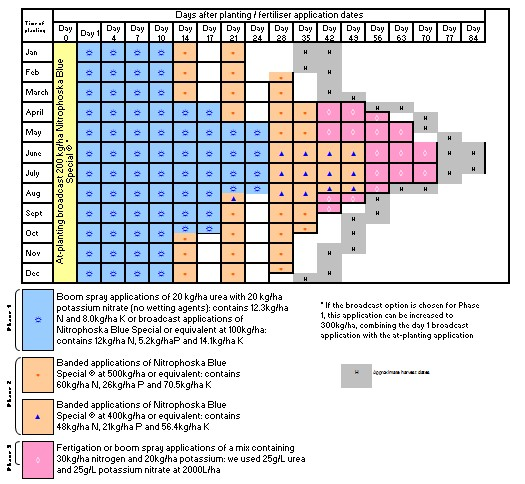3Phase fertiliser program
A ‘year-round’ fertiliser program for iceberg lettuce grown on the sandy soils of the Swan Coastal Plain is shown in Figure 4.

This strategy combines the methods outlined above with recommended rates and preferred products based on current research.
Irrigation
Individual applications of water should not exceed 3mm at any time during the crop establishment stage (Phase 1). Daily water requirements are best broken into multiple irrigations of 3mm or less, limiting the loss of nutrients from the developing root zone.
Applications can be increased to 6–8mm in later growth stages when the crop root zone is fully developed. An irrigation system with good uniformity is required to achieve best results.
Important notes
- Nitrophoska Blue Special® has been the most effective fertiliser tested for broadcast and banding, for efficacy and labour saving. It contains 12% nitrogen, 5.2% phosphorus and 14.1% potassium. Other fertilisers with similar analysis may also be suitable but need to be tested.
- Broadcast or spray applications in Phase 1 can be applied once a week (at double rates) with a small reduction in final yield when irrigation rates are low or heavy rainfall is not expected. Twice weekly applications are recommended when rainfall is expected or irrigation requirements are high.
- If fertiliser applications in Phase 3 are applied by boomspray, wash residue off the foliage to prevent fertiliser burn as higher rates are applied at this time compared to Phase 1.
- Urea may not always be a suitable source of nitrogen in Phase 3 in the coldest months as temperatures may be too low for its conversion into ammonium and nitrate.
